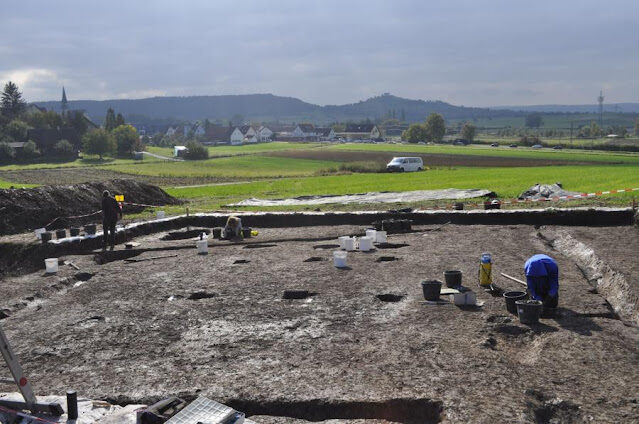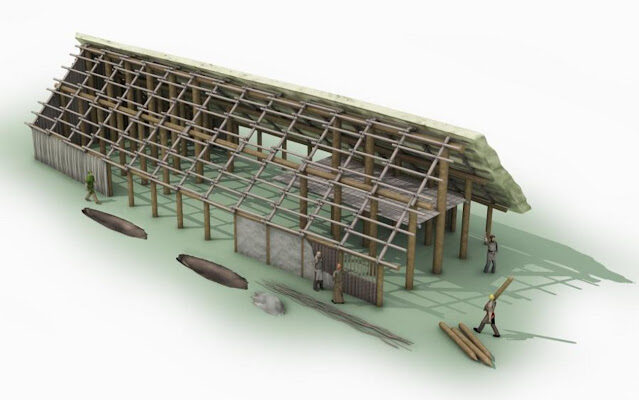
the foundations of a longhouse from the second half of the 6th millennium BC
The investigations took place within the framework of a joint project of the State Office for the Preservation of Monuments (LAD) in the Regional Council of Stuttgart and the University of Tübingen. The project on the settlement history of the Ammer Valley during the early Neolithic period was led by Prof. Dr. Raiko Krauß, Institute for Prehistory and Early History at the University of Tübingen, and Jörg Bofinger, Head of the Operative Archaeology Department at the LAD.
"The aim of the research project is to record the chronological sequence of the various early Neolithic settlements more precisely and to use natural science investigations to examine environmental conditions and lifestyles, and thus the landscape change caused by the start of agriculture in the 6th millennium ", explains Prof. Raiko Krauß.
The first step was to record the settlement area on an area of around six hectares in the spring of 2021 by means of geophysical measurements by the specialist company Terrana from Mössingen and to map the first indications of Neolithic settlement structures.
The magnetic field measurements showed that the remains of several of the characteristic longhouses (which can reach dimensions of over 30 metres in length) are still preserved in the ground and provide evidence of a settlement site of the so-called Linear Pottery Culture, the earliest farming population group in southwest Germany in the 6th millennium BC.

"Discolourations in the soil reveal the traces of the former posts of the house structure, as well as grave structures that can be interpreted as the last indications of walls of the house," explains Dr. Jörg Bofinger.
To the south of Entringen and to the north-east of Pfäffingen, evidence has already been found of house foundations that point to Linear Pottery villages. Thanks to the current field research, it has now been possible to locate without doubt another village with several longhouses or farmsteads of the first farmers about 500 metres north of the present course of the Ammer River.
Further investigations, such as 14C dating (radiocarbon method for determining the age of finds) or archaeobotanical analyses, will help to better assess questions of absolute chronology and economic methods.



Comment: See also:
- Crannogs: Neolithic artificial islands in Scotland stump archeologists
- Bronze Age farmers gave preferential treatment to cows over domesticated sheep, goats
- Arrival of Beaker culture 4,500 years ago changed Britain's DNA for ever
- Who were the mysterious Neolithic people that enabled the rise of ancient Egypt?
- World's oldest cooking pots found in Siberia, created 16,000 years ago at the end of the last ice age
And check out SOTT radio's: MindMatters: The Meaning of the World's Mythologies